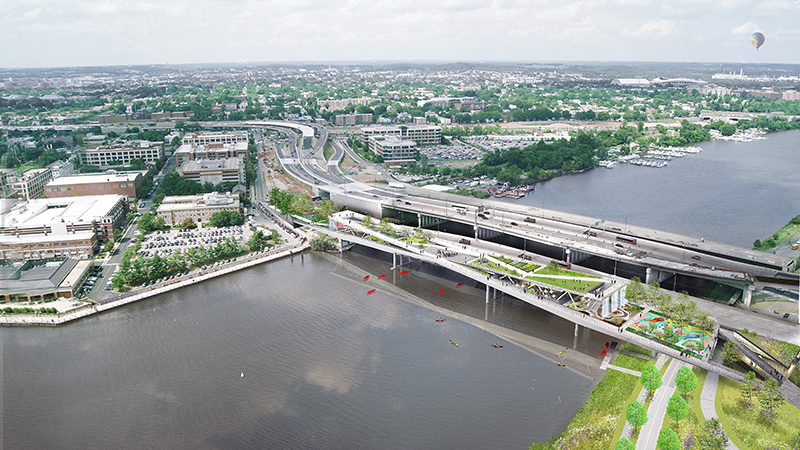To D.C. locals, the Anacostia River represents both a physical and metaphorical dividing line between the city’s haves and have-nots. To the west of the river sits the Capitol Building, the epicenter of American politics, surrounded by affluent neighborhoods where less than a quarter of the residents are black, household annual incomes average about $140,000, and around half of the residents are homeowners, despite the high median home price of $777,000. Not surprisingly, unemployment is low in these neighborhoods, as are rates of childhood poverty.
Compare that to the Anacostia neighborhood east of the river. There, 92 percent of the residents are black, annual incomes average $48,000, and less than one-fourth of the residents are homeowners despite a more affordable median home price of $329,500. In Anacostia and surrounding communities, roughly 16 percent of residents are unemployed, and 50 percent of children live in poverty.
One nonprofit, Building Bridges Across the River (BBAR), developed a plan to help bridge the divide: an elevated park to connect communities on both sides of the river. The park, scheduled to open in 2025, will serve as a common space for recreation, arts, and culture. Beyond connecting east and west, BBAR’s plan creates opportunities to prevent resident displacement, improve neighborhood conditions and promote resident-owned small businesses.
The $90 million project needed support and JPMorgan Chase was in a unique position to help from the very beginning. In 2017, the bank made an initial investment of $25 million in Greater Washington, significantly impacting Anacostia and other parts of Wards 7 and 8. Of that, $5 million was awarded to support BBAR and a Washington, D.C.-based collaborative of Community Development Financial Institutions (CDFIs) to support access to capital and technical assistance for minority- and locally-owned small businesses, construction training to local residents for work on the 11th Street Bridge Park and other forthcoming developments and the preservation of affordable housing with the Douglass Community Land Trust.
“What we have seen time and again is that collaborative partnerships are a really effective way to leverage community investments,” says Dekonti Mends-Cole, vice president of global philanthropy at JPMorgan Chase. “It’s clichéd, and yet also true, that they can create a sum so much greater than the whole of the parts.”
BBAR had the bank’s backing, but before getting off the ground, they needed community buy-in.
“Before we engaged an architect, an engineer, or anyone like that to design the 11th Street Bridge park, we spent two years going out and talking to the community,” says Scott Kratz, director of the project. “We had more than 200 meetings with faith leaders, community leaders, local business owners and government officials to make sure we understood the residents’ needs. We wanted to make sure we addressed those needs before we start building instead of trying to insert it later as an afterthought.”
Why D.C. and Why Now?
Washington, D.C. is one of the nation’s fastest growing cities, with a population that is increasing by more than a thousand people per month thanks to the city’s bevy of political and professional jobs. As the city has grown, so too has its economic inequality, which breaks down along racial lines.
City newcomers who cannot afford to live west of the river are heading east, bringing with them a wave of gentrification that increased home prices in Anacostia by 70 percent from 2010 to 2015. In response, more than two dozen new real estate developments are slated to come online east of the river in the next few years, raising concerns that residents who have lived in Wards 7 and 8 for generations will be priced out of their homes.
Through intentional and integrated investment, philanthropy and policy, JPMorgan Chase is focused on closing the racial wealth divide today — and for generations to come.
Learn more about how JPMorgan Chase is expanding economic opportunities for residents of Greater Washington through its commitments to equitable local development.




